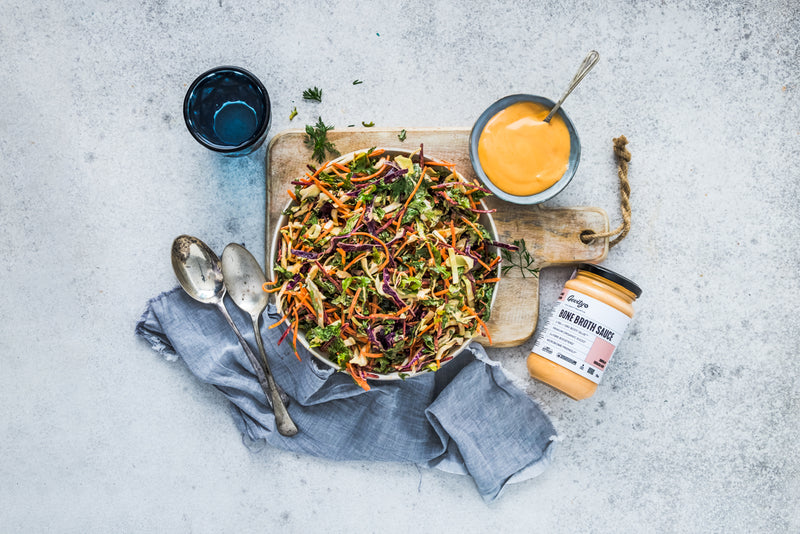Did you know that humans have anywhere between 10-100x more microorganisms (bacteria) than human cells? These bacteria are mainly located in the gut and are responsible for many functions, including our metabolism, immune system and even nervous system.
Research is constantly uncovering new information about how these bacteria work and how we can use them to improve our health. Our health expert has recently highlighted the following:
- The huge impact our digestive system (and especially our gut) has on overall health.
- The physical/anatomical integrity and health of our gut as being important to protecting its living organisms (bacteria) AND ensuring we stay healthy.
- The importance of the metabolic health of our gut bacteria. In fact, we now know what happens inside our gut has huge effects on metabolic mechanisms in all systems of the body.
Immune and nervous systems are classic examples of how everything is connected and how the gut can rule our health. This includes numerous metabolic functions, from production of essential neurotransmitters to absorbing nutrients required to keep us alive.
In this article, we’ll take you on a journey and explore both the anatomy and important structures of our digestive system as well as what we can do to enhance their longevity.
What are the structures of our digestive system?
A simple way to think about our digestive system is dividing it into three parts;
- Organs (including membranes protecting the internal structures).
- Digestive juices, enzymes, hormones and all secretions involved in digestive activities .
- Microorganisms (aka our gut bacteria) that carry out important metabolic functions.
Although we can divide our digestive system into these three sections, everything affects everything. We can’t have healthy bacteria if our digestive juices are lacking in quality or quantity. On the other hand, healthy structure is required to produce and excrete quality and quantity of digestive juices.
So, where do we start? We start looking after the structural health of the digestive system so it can provide storage, metabolic and absorption sites for our digestive needs.
Here is a simple digestive system breakdown:

*Accessories organs (these organs do not take part in digestion but provide essential support to the organs that do); pancreas, gallbladder, liver.
Each one of these organs has different types of tissues and cells so they can perform their own individual functions. It’s important to remember that good nutrition is essential for the formation and maintenance of these organs.
Research has also found that important protective layers (internal membranes) are not only metabolic sites in most of these organs, but they are also an essential physical barrier to protect the whole body. The emphasis on the importance of this physical barrier throughout our digestive system has become a major sector of gut health care.
Throughout our whole digestive tract, it is crucial that food does not leak to other systems of our body. Our digestive system recognises food (carbohydrates, protein, fat, etc), but other organs in our body may not. If these organs do come in contact with food particles, it may trigger an immune reaction (e.g. rashes, headaches, and diarrhoea to mention a few). When that happens too often, we may see the development of intolerance, allergy or in the worst-case scenario, an autoimmune condition.
Bad bacteria and the gut
The internal membrane of our gut is complex and these days almost considered as a separate organ. This semi-permeable membrane is like your own gut security system, ensuring your nutrients are absorbed and bad pathogens are eliminated.
Although having the ability and tools to fight back is amazing and keeps us alive, fighting back also means inflammation (although most of the time, low level inflammation).
So how does the body fight back against bad bacteria?
- The first responders take down what they can by releasing toxins (e.g. histamine).
- The body increases exit pathways for evacuation (vasodilation and increased blood flow to the area).
- The gut tight junctions open up so they can eliminate harmful substances.
Although this exposure is necessary to evacuate pathogens, it may also result in other substances leaking into our circulation. And as we know that other cells may not recognise the contents, this can cause another immune reaction (but now somewhere else in the body). If we fail to put a stop to it, this low level of constant inflammation begins affecting the entire system.
But what can we do about it?
Well, everyday we have the opportunities to invite good and healthy bacteria to reside in our gut. However, we also have a daily opportunity to invite bad bacteria to live there, too. To make things easier for you, here is a list of questions you can ask yourself to ensure you doing your part to encourage good bacteria in your gut:
Good bacteria loves:
- Fresh quality food (seasonal fruit and vegetables).
- Quality protein (well raised and sourced animal protein).
- Healing amino acids (found in bone broth and collagen protein).
- Good fats (e.g. grass-fed organic butter, coconut products and EVOO).
Bad bacteria
- Gluten.
- Grains and legumes (when not prepared appropriately).
- Vegetable oils.
- Refined sugar, artificial sweeteners and most syrups.
- GMO anything.
- Food additives and fillers.
Our number one goal at Gevity Rx has always been to help you live a long and healthy life.
Our OG product “Body Glue™” provides you with healing and anti-inflammatory amino acids to protect your body and your intestine wall. Better gut lining will help your gut retain everything that is meant to be there, providing a great environment for your gut bacteria to do what they need to do.





0 comments